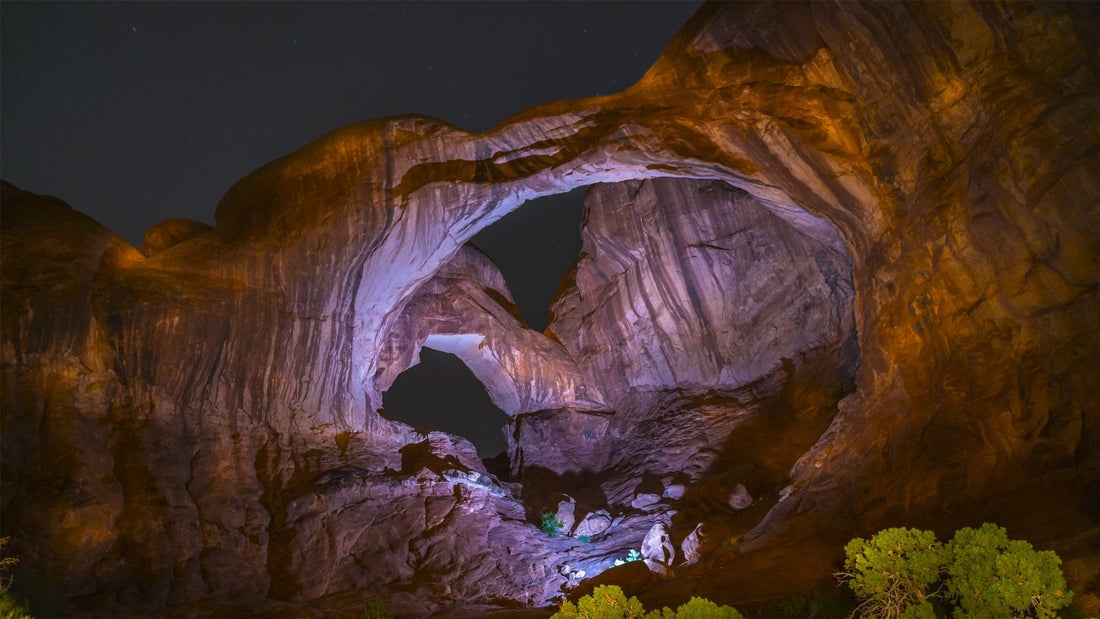The Most Illuminating U.S. Dark Sky Destinations

While various shades of light pollution affect the view of the night sky across the globe, there are still some special spots that are delicately preserved for their transcendent dark sky views.
In fact, some places are even certified as official “Dark Sky” areas under the International Dark Sky program.
Let’s take a look at some of the United States Dark Sky spots below!
But before you plan your trip to one of these luminescent locations, make sure to pick up one of our Newverest National Park Posters so you can track and plan your Dark Sky visits.
Cherry Springs State Park: Potter County, Pennsylvania

Cherry Springs State Park is named after its dazzling black cherry trees that grace the landscape. The area is situated on a plateau at about 2,300 feet above sea level. It is considered to be one of the darkest sky spots in all of the east coast.
It is popular among stargazers for its vast panoramic open view. You can even see the shadow of the Milky Way from here!
Joshua Tree National Park: Riverside County, California

As difficult as it is to see any starlight in the streets of Los Angeles, the nearby National Park, Joshua Tree, boasts the opposite.
If you’re dying to get a clear view of the Milky Way, the park recommends that you visit on less moonlit nights. During a new moon, you’ll get the clearest view. On some nights, you can even see the Andromeda Galaxy in the distance.
Geauga Observatory Park: Montville, Ohio

Not only does the Geauga Observatory have a gorgeous dark sky, but they also have a whole bunch of scientific instruments to help enhance your experience.
They host events so you can pal around with likeminded stargazers. They also provide telescopes and even weather instruments to check out, including a Seismic Station.
Dead Horse Point State Park: Moab, Utah

Dead Horse Point features a lovely outlook of the Colorado River and the nearby Canyonlands National Park. Its position above the canyons offers a full 360-degree view of the sky, and you can camp out under the stars if you’d like to.
Sometimes they have staff-lead programs that can guide you through the stargazing process. Or, you can journey alone if you’d rather have your own experience.
Enchanted Rock: Fredericksburg, Texas

Enchanted Rock is a preserved National Natural Landmark mountain made of pink granite. Hiking to the top of the dome offers an exquisite view of the dark sky and the Milky Way.
Occasionally, Enchanted Rock hosts star parties for visitors to be able to enjoy the view together.
Grand Canyon National Park: Mohave County, Arizona

From this renowned Wonder of the World, you can see a number of significant cosmic treasures including the Scutum Star Cloud, the Cygnus Dark Drift, and the Sagittarius Star Cloud.
The Grand Canyon National Park just celebrated their 100th birthday in 2019, where they announced that they had been awarded the official Dark Sky Certification. What better way to celebrate with them than visiting and seeing it for yourself?
Kissimmee Prairie Preserve State Park: Okeechobee, Florida

Make sure to reserve a campground at Kissimmee Prairie Preserve. Otherwise, you’ll be kicked out at sunset. But it’s worth the camping trip to lay out under the stars in this beautiful park.
You can see Jupiter and Saturn with the naked eye here. Plus, if you’re lucky, you might even be able to see the International Space Station in Earth’s orbit or view a rock launch from an east coast space center!
Headlands International Dark Sky Park: Mackinaw City, Michigan

Believe it or not, sometimes even the Aurora is visible from this park! Don’t count on it - you never know when the Aurora will make an appearance. But it’s most commonly seen right around the Spring or Fall equinox.
However, you will definitely see the Milky Way distinctly through the summer months, and towards the latter half of the summer, meteor showers are visible. Throughout the rest of the year, different constellations unfold, and there is always something spectacular to look at!
Death Valley National Park: Nevada/California Border

Death Valley is the biggest certified Dark Sky in the United States.
Not only can you go stargazing at any time during the year, but in the winter and spring, you can attend various hosted astronomy events, including the annual Death Valley Sky Festival!
Whether you’re on the east coast, west coast, or somewhere in the middle, there is guaranteed to be a special spot where you can catch some stellar starlight. Whether you’re taking a night trip, camping over a weekend, or attending a smashing event, we hope you have a dream-worthy experience!
Have you been to any of these places before? Planning a trip to one of them soon? We’d love to know about your experience in the comments!

